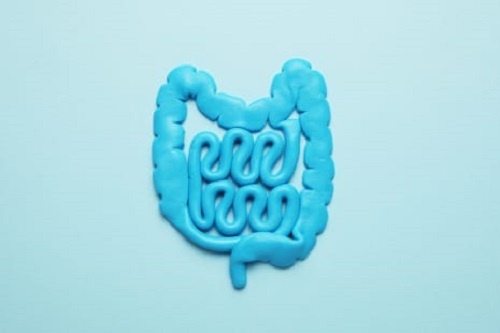Nutritional Summer Recipes
With so many great summer foods available to us in Australia, it is easy to crate delicious and nutritionally sound summer recipes .
The Australian Dietary Guidelines recommend that children achieve and maintain a healthy weight, be physically active and consume adequate amounts of nutritious food and drinks to meet their energy needs.
In particular, your child should:
- Consume a wide variety of nutritious foods from the five food groups – vegetables (including legumes and beans); fruit; grain; lean protein; reduced fat dairy – every day.
- Limit their intake of foods containing saturated fat, added fat, added salt, added sugars and alcohol.
A balanced diet
By eating from the five food groups, your child will not only be getting essential vitamins and minerals needed for optimal growth, but they are more likely to make healthy choices as they get older. The Australian Dietary Guidelines recommend that children eat the following number of serves* per day:
| Food Group |
Number of Serves |
||
|
2-3 years |
4-8 years |
9-13 years |
|
| Vegetables and legumes/beans |
2½ |
4½ – 5 |
5 – 5 ½ |
| Fruit |
1 |
1½ |
2 |
| Grain/cereals (mostly wholegrain) |
4 |
4 |
5-6 |
| Lean meats and poultry, fish, eggs, tofu, nuts and seeds |
1 |
1½ |
2½ |
| Milk, yoghurt, cheese (mostly reduced-fat) |
1½ |
2-3 |
3½ |
* The above recommendations are a guide only, and don’t take individual needs and gender into account.
Some examples of how to include these foods in a healthy eating plan for your child include:
- Breakfast – bowl of wholegrain cereal topped with fruit and yoghurt
- Lunch – wholegrain wrap spread with advocado, topped with chicken and salad
- Dinner – spaghetti bolognaise, (add grated carrot, zuchinni or other vegetables to the sauce), sprinkled with grated cheese.
What’s next?
Should you require the addition of vitamins or supplements to your diet, you can shop a full range of supplements here.
What about snacks?
Snacks provide an excellent opportunity for children to get their daily quota of healthy, nutritious foods. Unfortunately, statistics show that most kids don’t eat enough vegetables, and instead fill up on foods high in saturated fat, added sugars and salt. While these ‘treat foods’ are okay occasionally, consuming them too often can lead to poor nutritional intake, dental decay and weight gain.
Some ideas for healthy snacks that will meet nutritional needs for children particularly in the summer months, include:
- smoothies made with fresh fruit, milk and yoghurt
- homemade cakes and muffins with added grated fruit or vegetables (e.g carrot and zuchinni)
- fresh fruit skewers with yoghurt
- poached or tinned fruit (no added sugar) with custard or yoghurt
- boiled egg with wholegrain toast
Put the fun back into food
One of the keys to getting your child interested in healthy eating is to make it fun. Healthy toddler meals can be made more appealing by cutting sandwiches into shapes using cookie cutters, or making ‘faces’ using a variety of different foods (e.g. cucumber slices for eyes, capsicum strips for a mouth, etc.). It’s also important to encourage little ones to feed themselves as soon as they’re old enough.
Final tips
Choosing healthy food for your child is the easy part. Getting them to eat it, and enjoy it can sometimes be tricky. Here are some tips that may help.
- Lead by example – when your child sees you eating healthy food, they’re more likely to do the same.
- Plan your meals – involve your children when you are planning meals by asking them what they’d like to eat.
- Involve your kids – get them to help you with grocerry shopping and meal prepping, and they’ll be more likely to eat what is served.
If your little one is a bit fussy when it comes to eating, don’t fret. Keep offering healthy options and avoid giving them ‘anything’ just so they’ll eat.
Research shows that what children learn at home about healthy eating and making the right nutritional choices will have the biggest influence on the choices they make when selecting foods to consume at school and fast-food restaurants. So why not make sure your child gets off to the best start?
Please note: The information supplied is general in nature. Please consult your medical practitioner for individual advice.
References:
Eat for Health, Healthy Eating for Children,
Australian Institute of Health and Welfare, Australia’s Health, 2018, In brief
https://www.aihw.gov.au/reports/australias-health/australias-health-2018-in-brief/contents/about
Nutrition Australia, Food and Fitness for Children,
http://www.nutritionaustralia.org/national/resource/food-and-fitness-children
More health advice
View our wide range of health advice, tips and recommendations by visiting our health articles or checking out our top health articles below.

Vitamin D: A practical guide
One of the most important vitamins that our body needs to stay healthy is vitamin D. What’s even better is that it’s available for free from the sun!

Maintaining Healthy Bowel Habits
However, many people experience great difficulty passing a bowel motion and spend a lot of time sitting on the toilet with a very unsatisfactory result.

Understanding Constipation & Laxatives
The slower the food passes through the digestive tract, the more water will absorb into your colon. This results in less water in your stool.
